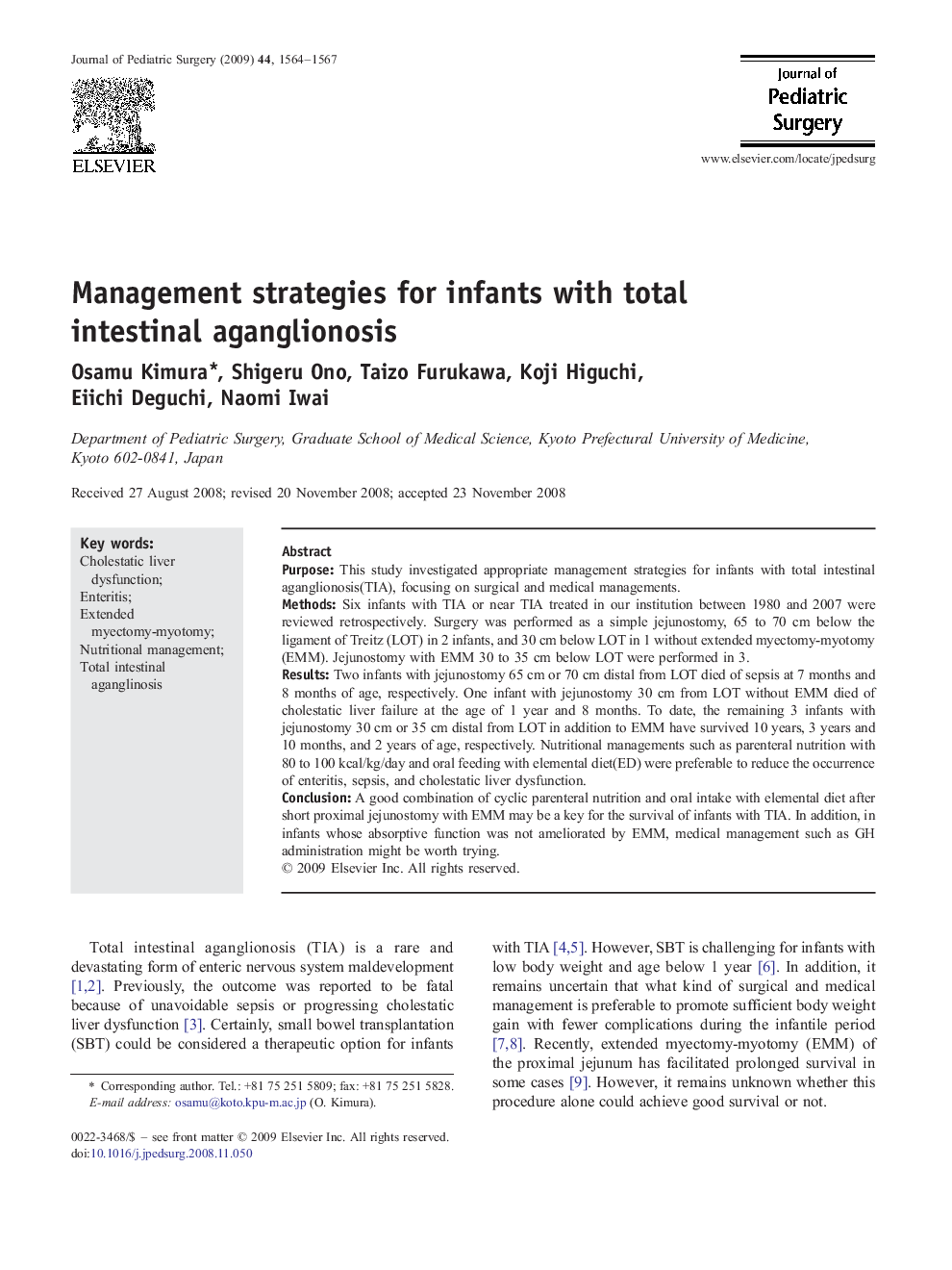| Article ID | Journal | Published Year | Pages | File Type |
|---|---|---|---|---|
| 4158192 | Journal of Pediatric Surgery | 2009 | 4 Pages |
PurposeThis study investigated appropriate management strategies for infants with total intestinal aganglionosis(TIA), focusing on surgical and medical managements.MethodsSix infants with TIA or near TIA treated in our institution between 1980 and 2007 were reviewed retrospectively. Surgery was performed as a simple jejunostomy, 65 to 70 cm below the ligament of Treitz (LOT) in 2 infants, and 30 cm below LOT in 1 without extended myectomy-myotomy(EMM). Jejunostomy with EMM 30 to 35 cm below LOT were performed in 3.ResultsTwo infants with jejunostomy 65 cm or 70 cm distal from LOT died of sepsis at 7 months and 8 months of age, respectively. One infant with jejunostomy 30 cm from LOT without EMM died of cholestatic liver failure at the age of 1 year and 8 months. To date, the remaining 3 infants with jejunostomy 30 cm or 35 cm distal from LOT in addition to EMM have survived 10 years, 3 years and 10 months, and 2 years of age, respectively. Nutritional managements such as parenteral nutrition with 80 to 100 kcal/kg/day and oral feeding with elemental diet(ED) were preferable to reduce the occurrence of enteritis, sepsis, and cholestatic liver dysfunction.ConclusionA good combination of cyclic parenteral nutrition and oral intake with elemental diet after short proximal jejunostomy with EMM may be a key for the survival of infants with TIA. In addition, in infants whose absorptive function was not ameliorated by EMM, medical management such as GH administration might be worth trying.
